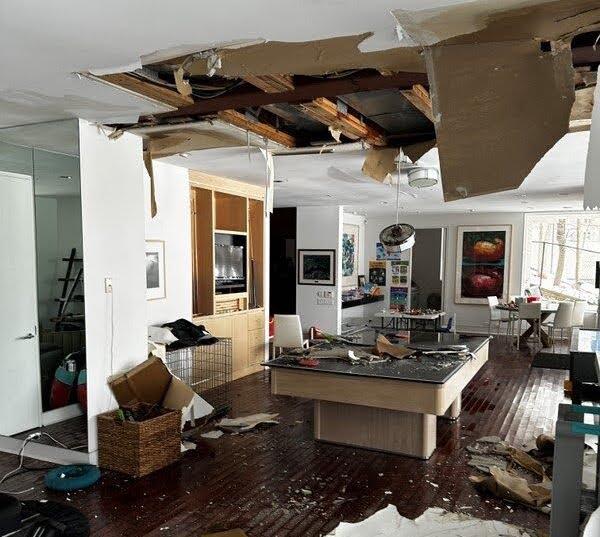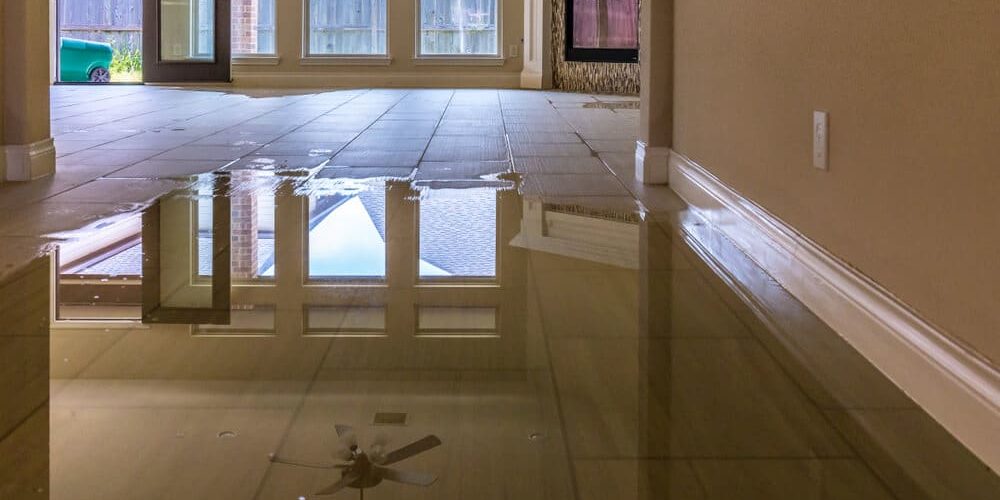Water Damage Cleanup Experts Offering Prompt and Efficient Solutions
The Refine of Water Damages Clean-up: Ensuring Your Home Is Restored Properly
Water damage can be a daunting challenge for homeowners, requiring a organized and thorough cleanup process to bring back security and capability. An extensive analysis is important to recognize the extent of the damage and determine the suitable remediation steps. Following this, effective water extraction methods play a crucial function in reducing additional damage. The nuances of drying out, sterilizing, and ultimate repair are equally vital and usually neglected. Comprehending these stages can make a considerable difference in the result of your home's restoration, prompting a closer consider what each step involves.
Evaluating the Damage
Upon finding water damage, the primary step is to completely examine the degree of the effect. This preliminary evaluation is vital, as it assists determine the essential steps for efficient clean-up and restoration. Begin by examining the impacted locations, including walls, ceilings, floorings, and individual possessions, to identify the resource of the water invasion, whether from flooding, leaks, or condensation.
Documenting the damage is important for both insurance policy cases and planning restoration initiatives - damage restoration services. Usage pictures and written notes to capture the extent of the damages, keeping in mind any kind of afflicted architectural aspects and products. Pay special focus to areas that may not be promptly noticeable, such as behind wall surfaces and under carpetings, as hidden moisture can cause more problems, including mold and mildew growth
Additionally, evaluate the timeline of the water exposure. The longer the materials stay damp, the higher the capacity for damages. Recognizing the period of direct exposure will certainly educate the necessity of removal initiatives. Inevitably, a comprehensive assessment lays the groundwork for a successful water damages clean-up procedure, guaranteeing that all influenced locations are attended to effectively and extensively.
Water Removal Methods

Experts generally utilize submersible pumps for bigger quantities of water, which can promptly minimize flooding in cellars or other affected areas. For smaller amounts, wet/dry vacuums are typically utilized to remove recurring moisture from rugs and difficult surface areas. Furthermore, using portable extractors permits targeted removal in restricted rooms or areas with delicate products.
In circumstances of infected water, such as sewage or floodwater, advanced extraction techniques may include using biohazard tools to make sure security and compliance with health guidelines. High-powered extraction devices are essential in lessening water retention in structural materials, which can lead to mold growth and architectural deterioration otherwise resolved quickly.
Ultimately, the effectiveness of water removal methods plays a crucial duty in the general success of the water damage cleaning procedure, laying the foundation for subsequent remediation initiatives.
Drying and Dehumidification
When standing water has actually been successfully extracted, the following vital phase in the water damage cleaning process is drying out and dehumidification. This step is vital to protect against additional damage and mold and mildew growth, which can occur within 24 to 2 days in damp settings.
To accomplish efficient drying out, specific tools such as industrial-grade air movers and dehumidifiers is employed. Air moving companies circulate air throughout wet surfaces, boosting evaporation prices, while dehumidifiers reduce moisture levels airborne, promoting a favorable setting for drying out. The mix of these tools makes sure that moisture is drawn out from home furnishings, wall surfaces, and floorings, allowing them to dry completely.
It is essential to keep track of the drying out procedure very closely. Experts typically utilize dampness meters to assess the moisture content in different products, guaranteeing that all influenced locations reach acceptable dryness levels. This thorough technique assists to stop hidden moisture pockets that can lead to structural damage or unhealthy mold development.
Cleansing and Sanitizing
After the drying and dehumidification phase is full, the following essential step in water damages cleaning is cleaning up and sterilizing the influenced areas. This procedure is essential to stop the development of mold, germs, and other pathogens that thrive in moist environments.
The cleaning phase generally involves getting rid of any kind of debris, dust, and pollutants from surface areas utilizing specialized cleaning up representatives. For difficult surface areas, a combination of soap and water or industrial cleansing products is often employed. Soft products, such as furniture and carpetings, may require much more substantial cleaning approaches, including heavy steam cleansing or deep extraction methods, to make certain extensive sanitation.

Sterilizing complies with cleaning, utilizing EPA-approved disinfectants to eliminate harmful microorganisms. This action is important, particularly in locations that might have entered contact with floodwaters or sewage, as these sources can posture serious wellness threats.
Additionally, it is essential to deal with any type of staying smells, which might require using odor neutralizers or sophisticated methods like ozone therapy. Correct cleansing and sterilizing not just restore the security and hygiene of your home yet also lay the foundation for effective reconstruction and repairs in succeeding stages of the water damages cleaning procedure.
Restoration and Repair Work

Once the evaluation is full, reconstruction initiatives can start. This generally involves repairing or replacing broken materials, making sure that all work abides with neighborhood structure codes and requirements. If drywall has been endangered, it will certainly require to be gotten rid of and changed with new material. Additionally, floor covering may need similar focus, depending on the degree of water exposure.
It is crucial to engage knowledgeable repair specialists during this process, as they have the expertise to take care of complex repairs successfully. They can aid minimize prospective future issues, such as mold and mildew growth or structural instability, hence making certain a safe and habitable living atmosphere. Inevitably, effective repair and fixings bring back the home's stability and improve its general value.
Conclusion
Finally, the process of water damages cleaning is critical for recovering a home to its pre-damage condition. Each phase, from evaluating the damage to carrying out reliable water removal strategies, complied with by complete drying, sterilizing, and needed repairs, plays an important role in making sure safety and compliance with building requirements. Reliable execution of these steps not just alleviates immediate damages but additionally improves the long-lasting stability and worth of the property.
Water damages can be a difficult challenge for homeowners, requiring a structured and precise clean-up procedure to bring back security and performance. Inevitably, an extensive assessment lays the foundation for a successful water damage cleanup procedure, ensuring that all influenced areas are dealt with effectively and extensively.
Effective water removal techniques are necessary in reducing damages and preventing further difficulties adhering to a water breach event.In final thought, the procedure of water damages clean-up is vital for recovering a home to its pre-damage condition. Each phase, from assessing the damage to applying reliable water extraction techniques, followed by detailed drying, sanitizing, and needed Click This Link repair services, plays an important role in making certain safety and compliance with building standards.